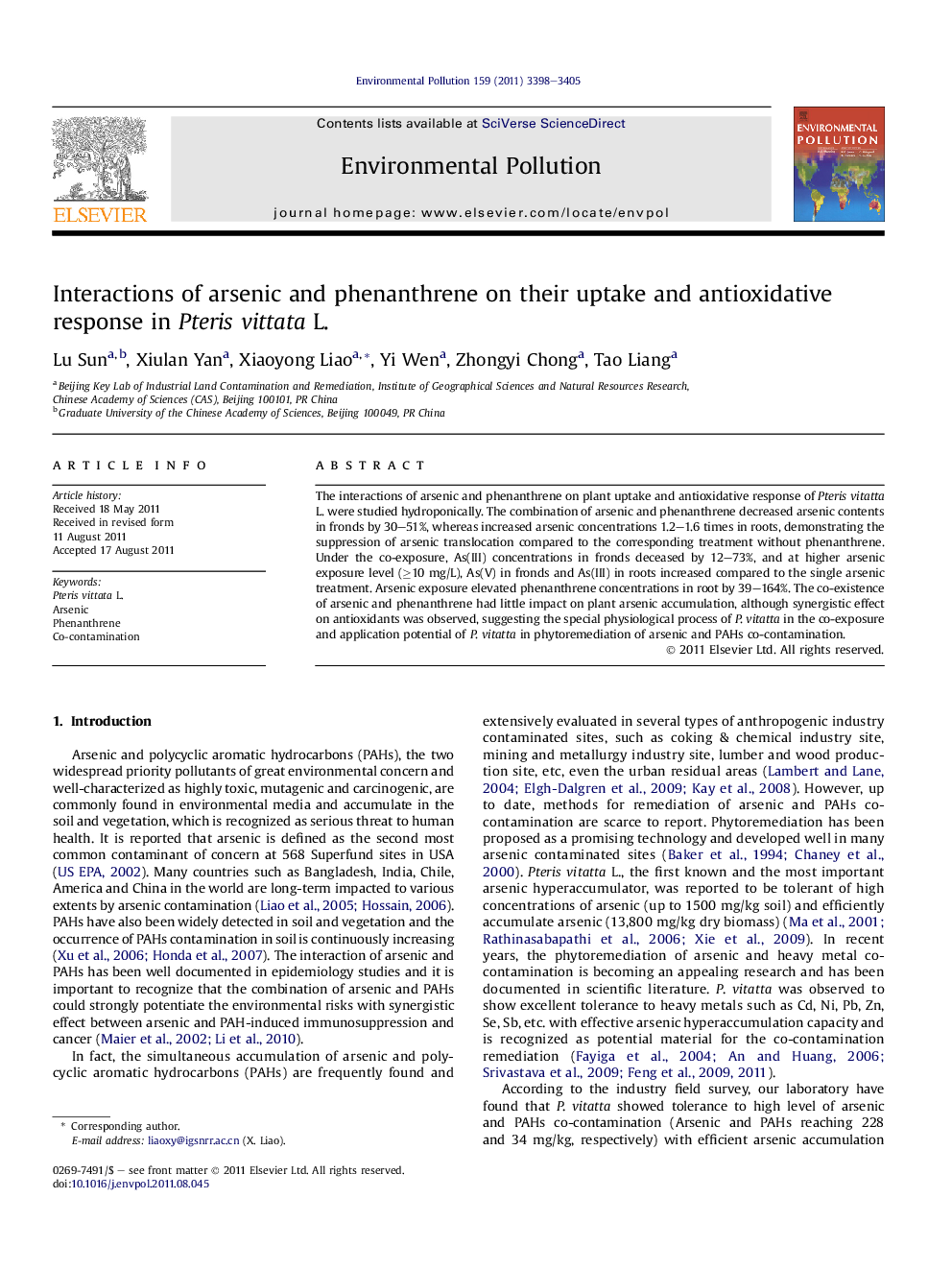| Article ID | Journal | Published Year | Pages | File Type |
|---|---|---|---|---|
| 4425236 | Environmental Pollution | 2011 | 8 Pages |
The interactions of arsenic and phenanthrene on plant uptake and antioxidative response of Pteris vitatta L. were studied hydroponically. The combination of arsenic and phenanthrene decreased arsenic contents in fronds by 30–51%, whereas increased arsenic concentrations 1.2–1.6 times in roots, demonstrating the suppression of arsenic translocation compared to the corresponding treatment without phenanthrene. Under the co-exposure, As(III) concentrations in fronds deceased by 12–73%, and at higher arsenic exposure level (≥10 mg/L), As(V) in fronds and As(III) in roots increased compared to the single arsenic treatment. Arsenic exposure elevated phenanthrene concentrations in root by 39–164%. The co-existence of arsenic and phenanthrene had little impact on plant arsenic accumulation, although synergistic effect on antioxidants was observed, suggesting the special physiological process of P. vitatta in the co-exposure and application potential of P. vitatta in phytoremediation of arsenic and PAHs co-contamination.
► Pteris vitatta L. show tolerance to the arsenic and phenanthrene co-exposure. ► P. vitatta efficiently accumulate arsenic and simultaneously enhance phenanthrene dissipation. ► Phenanthrene suppresses arsenic translocation from roots to fronds. ► Phenanthrene causes As(III) elevation in roots while reduction in fronds. ► Synergistic effect potentiates the toxicity and antioxidants in plant.
